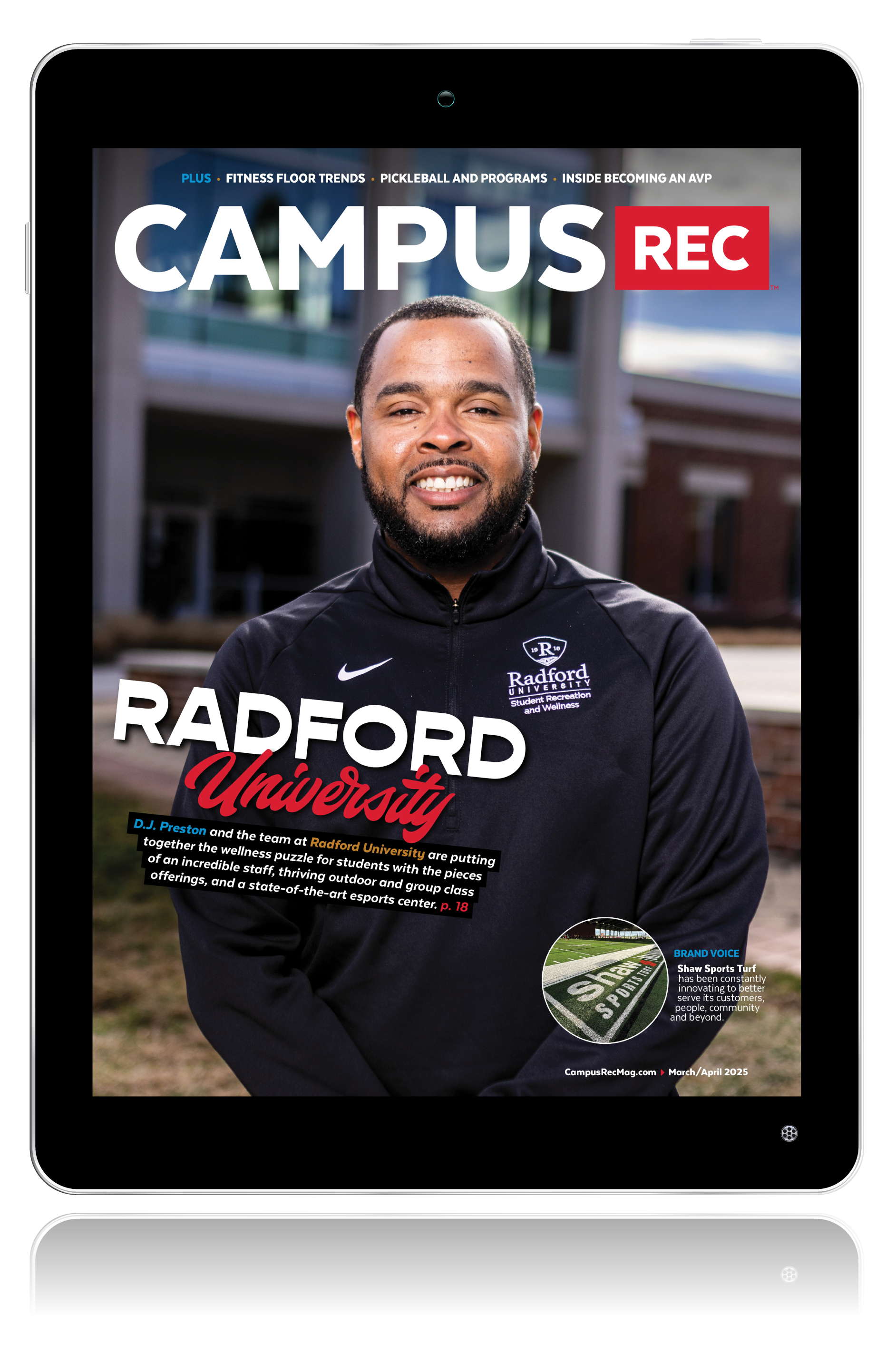Holistic health trends are coming to light in 2021. Ashley Demshki reflects on last year’s impact and shares ideas on how your campus can tap into this trend.
During this abnormal year, it was interesting to see what trends would emerge in 2021. Would we resurge stronger than before or cease to exist? Would physical gym facilities even be necessary in our future or would it come back with a vengeance?
While we are still waiting to see how some of these challenges play out, we have seen a push toward holistic health. According to WebMD, holistic health “considers the whole person — body, mind, spirit and emotions — in the quest for optimal health and wellness” not just medical treatment. As students are more aware of their immunity, and bodies in general, because of COVID, we see a shift from the traditional mentality of “gains” or “bikini body” toward mental health and self-care in the fitness industry.
Holistic Health Trend: Proof in the Numbers
According to the CEO of MindBody, the platform has seen customers make their mental and emotional health more of a priority by seeking out more classes like yoga and those that focus on mindfulness.
Equinox Media CEO Jason LaRose explained, “We’ve seen an incredible uptick in meditation since the beginning of the pandemic” with a 25% increase in meditation classes. He continued, “It’s a testament of how people’s thinking around overall wellness has been expanded.”
As students continue to work out from home, they’ve recognized the need for mental health to take center stage. They have done so by seeking out yoga and meditation classes from popular gyms and booking sites, MindBody and Equinox have noted. It is no doubt 2020 was a taxing year, not only with the disease at large but also with political and cultural unrest. It is no surprise we are seeing members put their mental health first.
What Does this Look Like?
Holistic health also explains a need for exercise as medicine. The idea of exercise and immunity has gone hand in hand with the rise of COVID. While the impact of exercise on COVID is unknown, it is still true exercise helps our physical well-being and can have immune boosting properties like:
- Reducing stress
- Preventing unnecessary weight gain
- Improving sleep.
As students began forming these habits during their lockdowns, home fitness is now ingrained. We have to push aside the thought however that home fitness is simply an on-demand exercise class or whiteboard workout. The idea of holistic health pushes the boundaries of what these new habits look like, which now include self-care and what Beth McGroarty, the vice president of Research at the Global Wellness Institute, calls “pillars of wellness,” meaning the “emphasis on exercise, healthy food, sleep and stress reduction.”
With this, we should see a decrease in detox teas and supplements and more focus on preventative overall care. No, I don’t just mean making that yearly doctor’s appointment. Rather, students are taking a new interest in ways to use fitness, meditation, sleep, healthy eating and therapy to take care of themselves before getting sick mentally or physically.
While the idea of a “mental health day” isn’t a new one, it does take on a new meaning. During the pandemic we had to cancel our vacation plans — a time when most of us revamp mentally for the remainder of the year. With anxiety over traveling and other restrictions, 2021 will be a year of the wellness routine and students taking time for themselves at home without other distractions.
Where Does Nutrition Come In?
Another wellness trend that falls in the holistic health category is intuitive eating. Across social media, we see nutritionists and other diet-debunking individuals taking center stage to make the shift away from a diet culture toward intuitive eating. Nutritionist Kimberly Snyder believes in 2021, “People will continue to turn away from restrictive diets, especially those that completely demonize a certain macronutrient, such as carbohydrates.”
She goes on to say, “There will be an increase in people embracing food in all its forms through the trend of up-cycling food, which means ugly vegetables and wasted food scraps can be turned into meals and snacks. It is a step toward a healthier, more sustainable and more conscious future.”
This is a great trend for recreation centers to think about for their future programming:
How can we incorporate not only nutrition into our programs but also work with food security offices on our campuses to minimize food waste and encourage donations to local food banks and organizations?
In Conclusion: Don’t Ignore Holistic Health
While the pandemic had disrupted a lot of our day-to-day activities and put a full twist on our industry, I believe the shift toward holistic health is a positive one. Our students are taking a step back from stress and anxiety. Instead, they are finding ways to deal with it in a healthy, preventative manner. It is worth investing time and money to help students reach these goals. In fact, it may change how we program in the long run.
Image courtesy of Shutterstock










